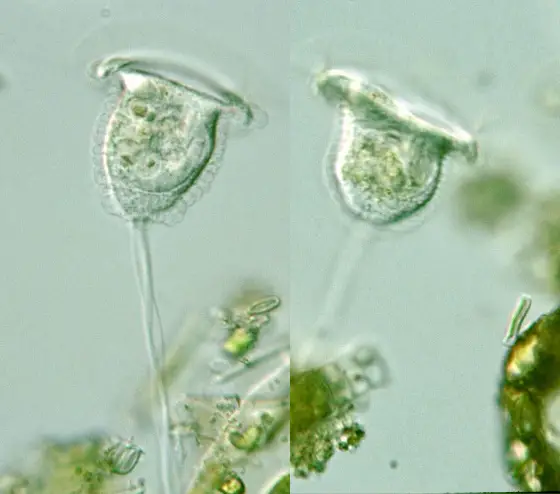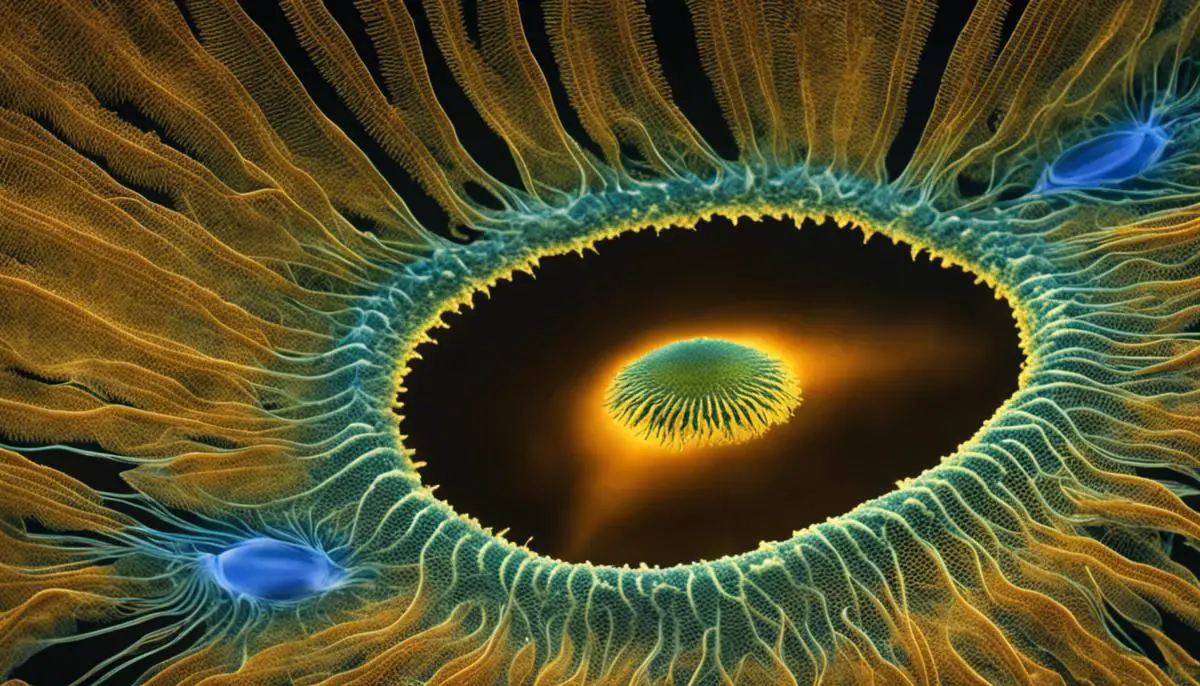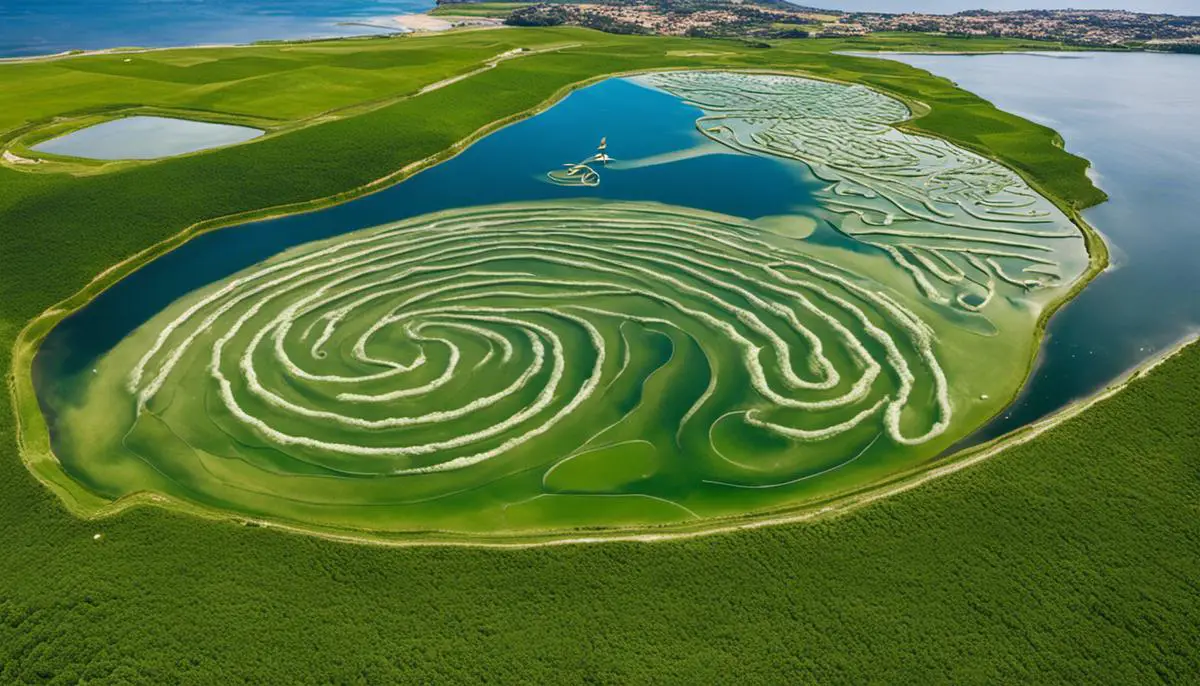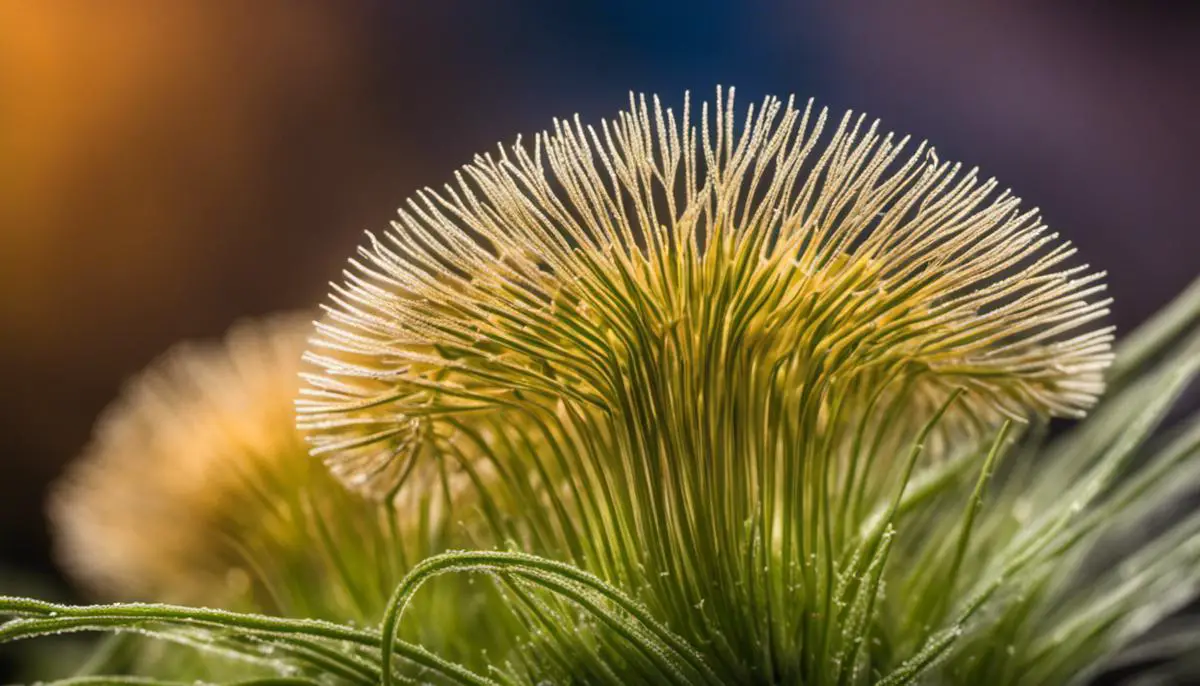Exploring the Economic Impact of Vorticella
Amid the myriad of microscopic organisms with significant economic implications, Vorticella holds a critical place. Existing silently within freshwater bodies, these organisms possess remarkable characteristics that impact various sectors, contributing considerably to human economic systems.
They function not only as vital bioindicators, providing a snapshot of water health, but also play an influential role in aquaculture, wastewater treatment, and research. This article undertakes a detailed exploration of these facets, shedding light on how small protozoa can significantly impact economic apparatus on a much larger scale.

Vorticella and Bioindication
Vorticella, a genus of protozoa commonly found in freshwater ecosystems and known to most of us in academic circles as the “bell animalcules”, has been recognized in the world of environmental biology as vital bioindicators. Unassuming as they may be, their widespread presence, rapid growth, and reaction to changes in their environment exhibit the health and status of aquatic ecosystems.
This relationship opens a portal for us to utilize these microscopic organisms as a cost-effective lens through which we can assess the well-being of our ecosystems and, consequently, our economies.
The biological surveillance and monitoring of our freshwater ecosystems are of utmost importance. It is akin to the proverbial “canary in the coal mine”, and Vorticella serves as these invaluable canaries of our water bodies. Described as sessile, peritrichous ciliates, they display remarkable sensitivity to shifts in water quality, thereby acting as sensitive bioindicators. Being both aerobic and photosynthetic, they are adversely impacted by alterations in their habitat, such as changes in nutrient levels, organic pollution, and increased levels of toxic substances, thereby revealing the physiological state of the water body.
The effects of anthropogenic activities become evident in aquatic ecosystems. One may observe exponential increases or declines of Vorticella in response to environmental perturbations. Unequivocally, any significant deviation from their ideal growth conditions causes a sharp reaction in their population, often characterized by a population crash or bloom, indicative of the ill-health of their ecosystem.
Unravelling these biological responses, Vorticella’s role as a biomonitor is of paramount importance to environmental agencies and water treatment facilities. Aquatic pollution can result in punitive economic losses as well as health risks. Regular monitoring of these protozoa populations can ensure early detection of detrimental environmental changes, potentially saving billions of dollars in clean-up operations, pollution-related health costs, and ecosystem restoration.
Furthermore, they play a game-changing role in waste management, including sewage and wastewater treatment. Vorticella, in consort with other protozoans, contributes significantly to the bioconversion of waste organic matter into biomass, disposing of harmful substances. The reduction of sewage volume and mass by Vorticella not only mitigates pollution problems but also has a financial upside. The cost savings from decreased waste treatment processing and lower energy and maintenance costs have clear economic benefits.
In the field of aquaculture, the presence of healthy Vorticella populations reassures aquatic farmers about the quality of their water, aiding the success and profitability of their endeavours. Conversely, a decline in Vorticella could signify potential risks, allowing farmers to intervene and prevent losses.
While our understanding of the value of Vorticella is continuously expanding, it’s important not to overlook that they form an integral part of the natural ecosystem and biodiversity. Conclusively, Vorticella, despite its microscopic size, has a large-scale impact on our environmental well-being and ergo our economies. It is our responsibility to work symbiotically with such bioindicators, carefully discern their quiet messages to read the health of our planet, and continuously work towards the sustainable existence of all life.

Vorticella in Aquaculture
Delving into the Impact of Vorticella on the Success and Viability of Aquaculture
Shedding light on the issue at hand, Vorticella, sessile-ciliated protozoans ubiquitously found in freshwater and marine environments, undeniably exert a major influence on the economics and success rate of aquaculture. The presence of Vorticella in water bodies forms an integral part of the nutrient cycle that is deeply intertwined with the process of aquaculture and profoundly contributes to the health and economy there.
The vast majority of aquaculture practices involve rearing animals that are filter feeders, a category that fundamentally interacts with the micro-life present in the water, Vorticella being a key player.
In a well-balanced ecosystem, these organisms can dutifully contribute to the welfare of the animal populations in question. They assist in the biological breakdown of waste, a process fundamentally akin to sewage treatment, thereby maintaining a cleaner, healthier environment that is acceptable for the growth of cultured species.
However, an uncontrolled exponential increase in the population of Vorticella can be a foreshadowing of looming problems. Such a surplus often implies excess nutrient availability, indicating potential overfeeding or inadequate filtration. Invariably, this can lead to ‘Vorticella outbreaks’, creating a hostile environment replete with harmful physiological effects on aqua-farms, most detrimental of all, the significant mortality in shrimp farms.
Further elucidating the economic dimensions, Vorticella outbreaks have emerged as an expensive issue to tackle. The clean-up and loss of stock can be devastating to aquafarmers, impeding the profitability and success of the industry. Importantly, the obscure nature of the problem, furthered by a lack of definitive detection techniques for these microorganisms, often leads to the delaying of diagnosis until infestations are far advanced.
Therefore, it remains paramount to develop a sophisticated and precise forecasting and early warning system for Vorticella population surges. A predictive model based on key factors that influence Vorticella proliferation (temperature, pH value, etc.) will aid in proactive measures and preventative action for aquafarmers.
The integration of Vorticella into the scientific and economic frameworks of aquafarming necessitates continuous research, monitoring, and assessment. This approach aids in the overall maintenance of the quality of water and the productivity of the aquatic community, thereby contributing to minimising economic losses and sustaining the overall profitability of the aquafarming industry.
In essence, a nuanced understanding of Vorticella’s role could radically transform the economic landscape of aquafarming. Hence, the importance of encompassing an ecosystem-based approach that values microscopic life forms as an essential part of the aquaculture machinery cannot be overstated.

Vorticella in Waste Water Treatment
Wastewater treatment serves as a pressing issue on a global scale—a challenge with significant economic, environmental, and public health implications. Amidst the rigorous study of bioindicators, Vorticella holds a position as one of the most intriguing entities. The potential of Vorticella extends well beyond basic water quality assessment but reaches into another paramount arena—wastewater treatment.
Much like their utility in water quality assessment and bio-indication, Vorticella’s meaningful contribution to wastewater treatment has been a subject of considerable scientific interest. In essence, these unicellular organisms serve as nature’s tiny waste managers, actively participating in the decomposition and mineralization of organic matter in wastewater. They attach to suspended organic material, engulfing it, in turn, initiating a cascade of microbial degradation and mineralization. This process renders it less harmful to the overall water system.
The economic implications of utilizing Vorticella as a natural wastewater treatment solution are notable. Traditional chemical and mechanical wastewater treatments are costly, not just in terms of infrastructure and operational costs but also in terms of their environmental impact. Herein, the cultivation of naturally occurring Vorticella offers an economically viable and environmentally friendly alternative.
Furthermore, Vorticella’s rapid response to changing conditions, already harnessed for bio-indication, can serve as an impressive asset in managing wastewater treatment. Dynamic shifts in Vorticella populations offer tangible data on treatment efficacy, comparable to more complicated and costly analytical methods.
Heading toward the future, the integration of Vorticella within wastewater treatment practices bears significant promise. Its function as a veritable diagnostician, an agent of biological control, and a node in the nutrient cycle offers exciting potentialities for ecological and economic efficiencies alike.
Nevertheless, several challenges remain with the exploitation and management of Vorticella populations within wastewater treatment systems. Notably, the propensity for rapid growth often leads to overpopulation and biofouling, requiring careful control and regulation. A key challenge lies in the balancing act of promoting enough Vorticella growth for effective wastewater treatment without encouraging overpopulation and the subsequent issues.
Therefore, the scientific world continues to invest in research and development in this area, seeking ways to fine-tune strategies that would maximize the potential of our microscopic ally. Sophisticated forewarning techniques, predictive tracking models, and improved monitoring strategies are imperative.
In conclusion, Vorticella’s significance in wastewater treatment is multidimensional—an efficient bio-degrader, a natural wastewater treatment solution, a bio-indicator, and a potential economical savior. The understanding and harnessing of the capabilities of Vorticella could indeed illuminate the path to sustainable, economically efficient wastewater management practices, and in the longer term, a more sustainable and healthier planet. For this, our passion and respect for the microscopic world must continue to run deep. The smallest of lifeforms often hold the solutions to our most significant problems.

Vorticella as a Research Subject
The Economic Considerations in Exploiting Vorticella for Basic and Applied Research
Vorticella, with its characteristic bell shape and rhythmic beating, has been intriguing researchers for centuries. These single-celled microorganisms signify more than their sheer biological interest – their pervasiveness in aqueous environments designates them as potent bioindicators and potential actors in wastewater treatment facilities.
A necessary premise is the financial considerations linked with the application of Vorticella in numerous settings. Their usage extends across basic research endeavors right up to applications in crucial areas such as water treatment and aquafarming. Each of these has its unique economic implications.
Vorticella, in their role as basic research subjects, are amenable to genetic manipulation and can showcase cellular functions, such as contractility, which have analogs in higher organisms. The cost involved herein is the maintenance of cultures under lab conditions. While the setup necessitates investments, the insights gained from researching these organisms potentially revolutionize our understanding of key biological processes.
Akin to most basic research, the commercial utility of Vorticella, say as model organisms in drug screening, is a more distant prospect with uncertain payoffs. Yet, their utility can potentially offset the costs of research and also monetize the process. However, a cautious approach must be heeded to prevent potential issues, primarily concerning ethical considerations and the responsibility towards the conservation of microbial biodiversity.
From the applied perspective, the ability of Vorticella to thrive in varying water quality conditions, with a demonstrated response to pollutants, qualifies them as part of biological assessment systems. Their role in bioindication has the potential to reduce reliance on expensive and time-consuming chemical tests, thus adding an economic advantage. Further, the incorporation of vorticellids in common biological assessment protocols can significantly lower costs without compromising the ecological relevance of these tests.
A significant amount of interest has been vested in understanding the role of Vorticella in waste management, particularly in sewage treatment. Here, their capacity to feed on bacteria and organic debris can be exploited to improve the efficiency of conventional treatment methods. Although the deployment of Vorticella in these facilities necessitates an initial investment in terms of infrastructure and personnel training, the long-term savings from reduced chemical usage and potential resale of treated water can markedly offset these expenses.
Further, the complex interactions between Vorticella and aquaculture systems present both potential benefits and challenges, with concomitant economic implications. As a natural part of a balanced ecosystem, Vorticella contributes significantly to nutrient recycling within these systems. However, unchecked Vorticella proliferation may necessitate costly remedial measures in aquafarms.
An integrated perspective necessitates acknowledging and harnessing the multiple roles played by Vorticella in different sectors. For instance, the integration of Vorticella in wastewater treatment and aquaculture can bypass certain economic barriers, since a significant portion of nutrients can be recycled into these systems, potentially reducing the costs involved in managing the water quality.
Despite their potential, investing in Vorticella as a solution also comes with challenges, primarily related to population control. Forecasting their population surges and developing early-warning systems require dedicated research funding which considers their ecological relevance and long-term applicability.
In conclusion, the many dimensions of the economic considerations for the use of Vorticella in basic and applied research render it an area deserving of continued attention. As we stride into an era calling for sustainable practices, the microscopic Vorticella continues to offer remarkable options, each of which calls for a meticulous understanding of its potential benefits and challenges.
However, the long-term prospects and potential insights garnered from harnessing a low-trophic organism like Vorticella are overwhelming, potentially defining the course of future research and industry practices.

Having traversed through the multifaceted world of Vorticella, it is evident that this single-celled protozoan holds profound economic implications. Its role as a water quality assessor, a player in aquaculture, a contributor to wastewater treatment, and a subject of compelling scientific research, affirms its economic importance.
Inherent in this understanding is the acknowledgment that every aspect of our ecosystem interlocks intricately with human activities and economic processes. As we continue to unravel the complexities of these tiny organisms like Vorticella, our chances for harnessing their potential and mitigating their challenges grow, promising a more sustainable and economically efficient future.
